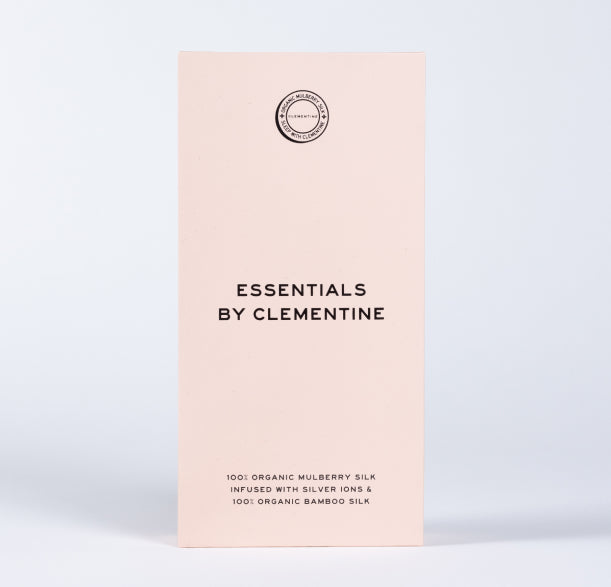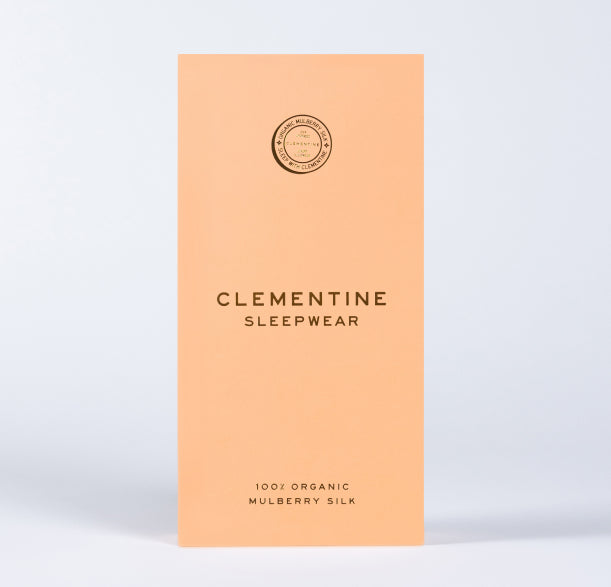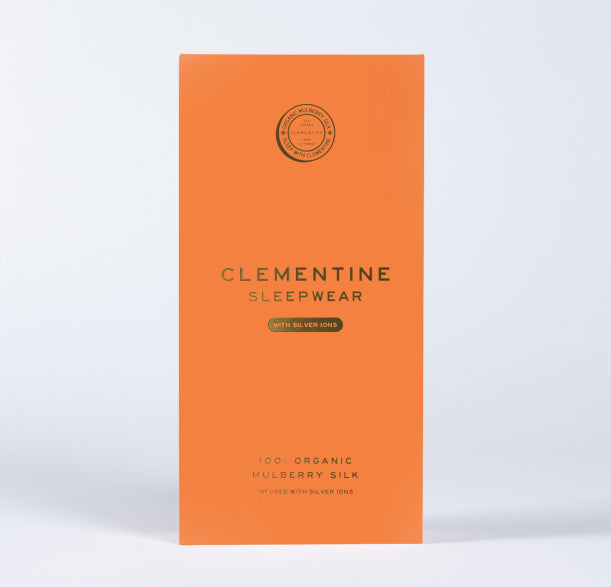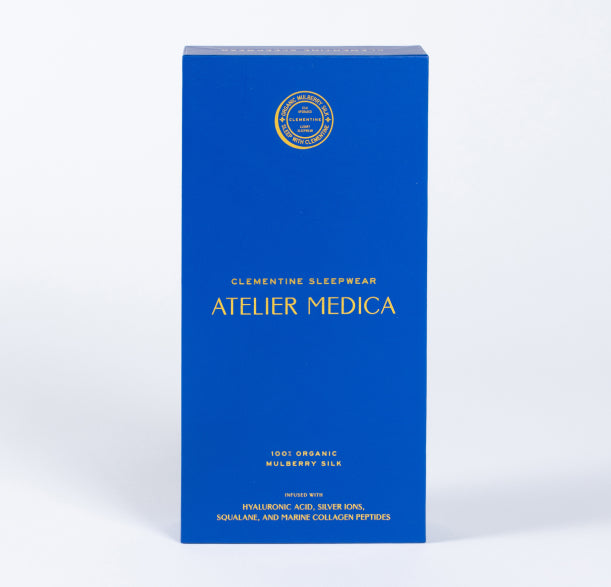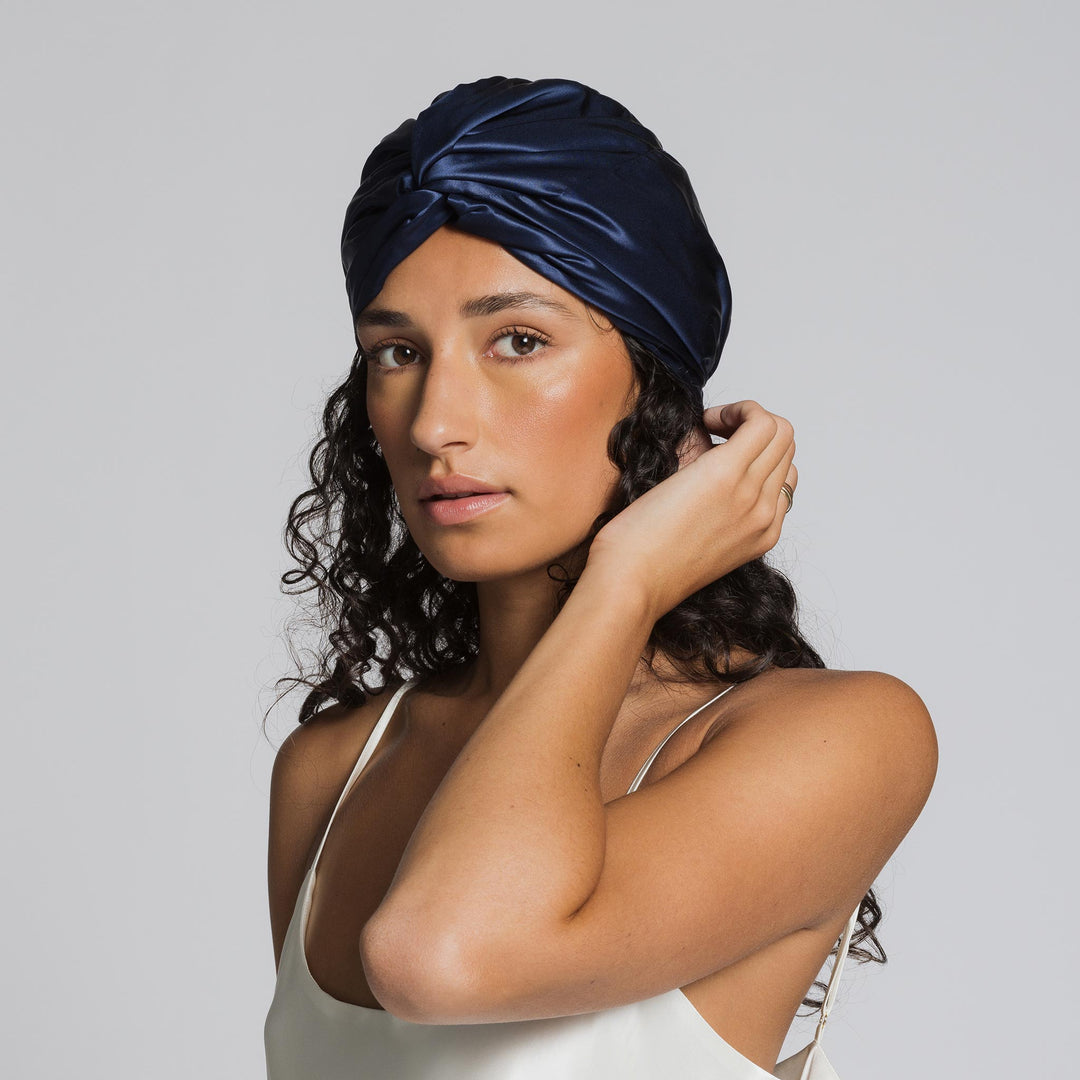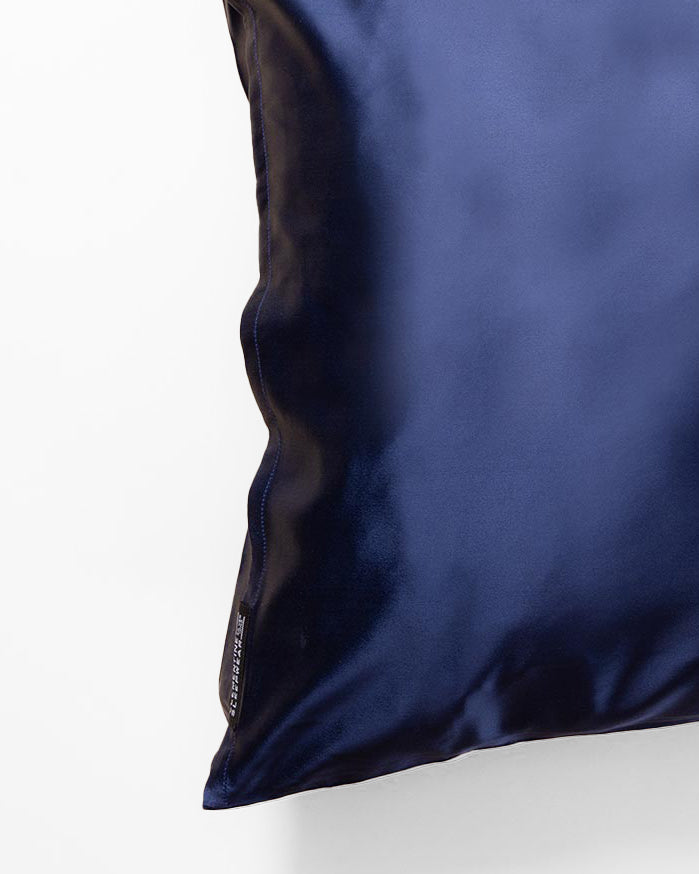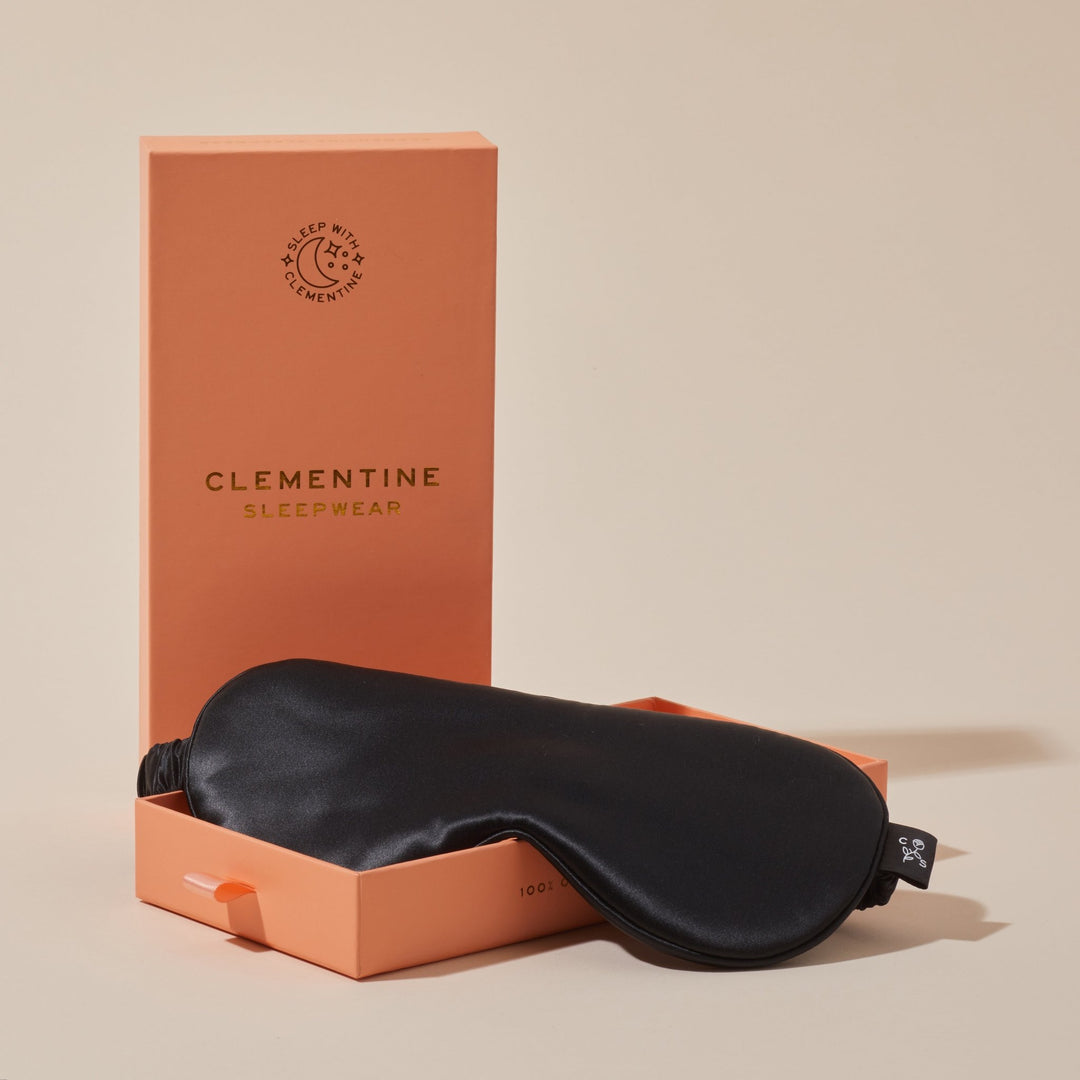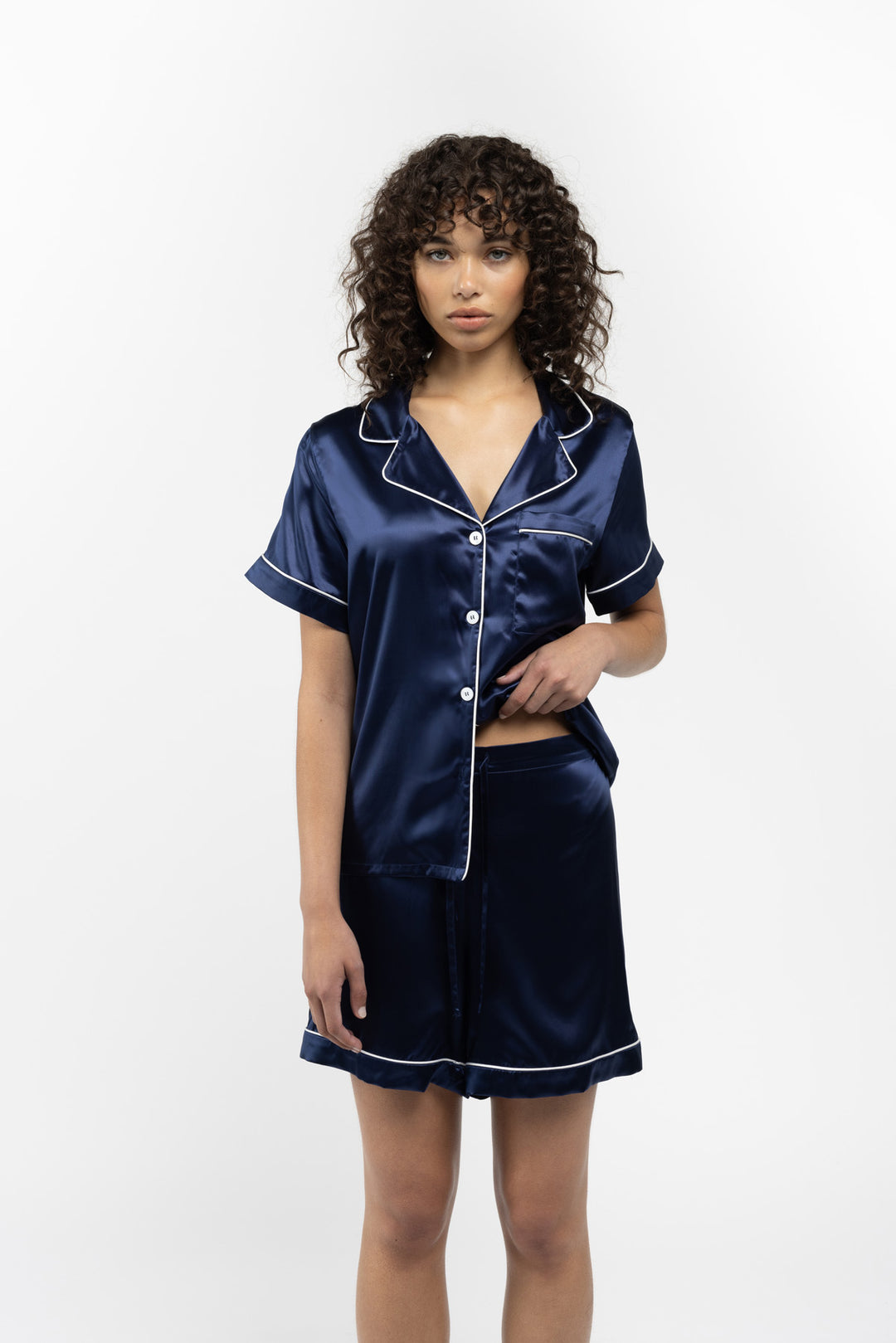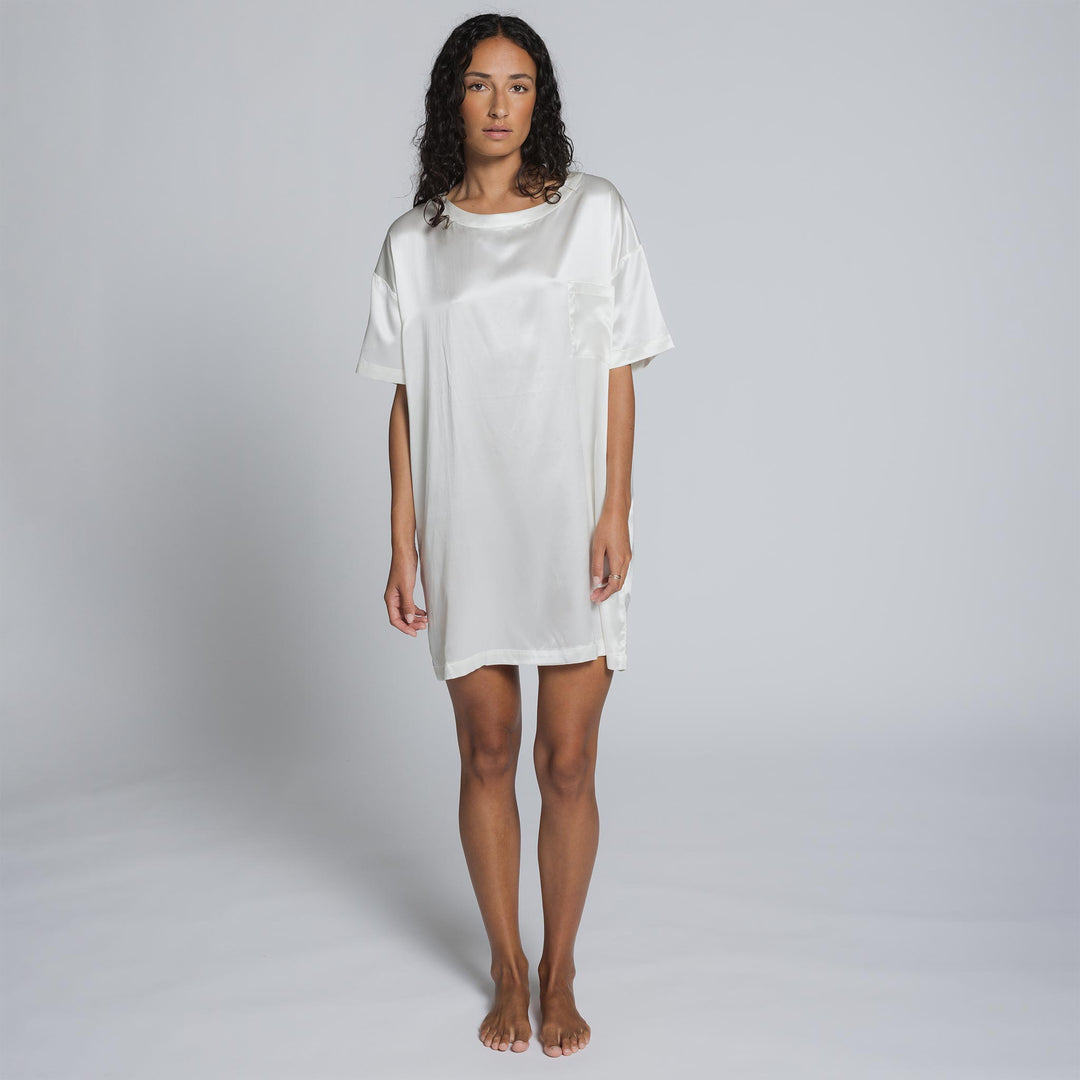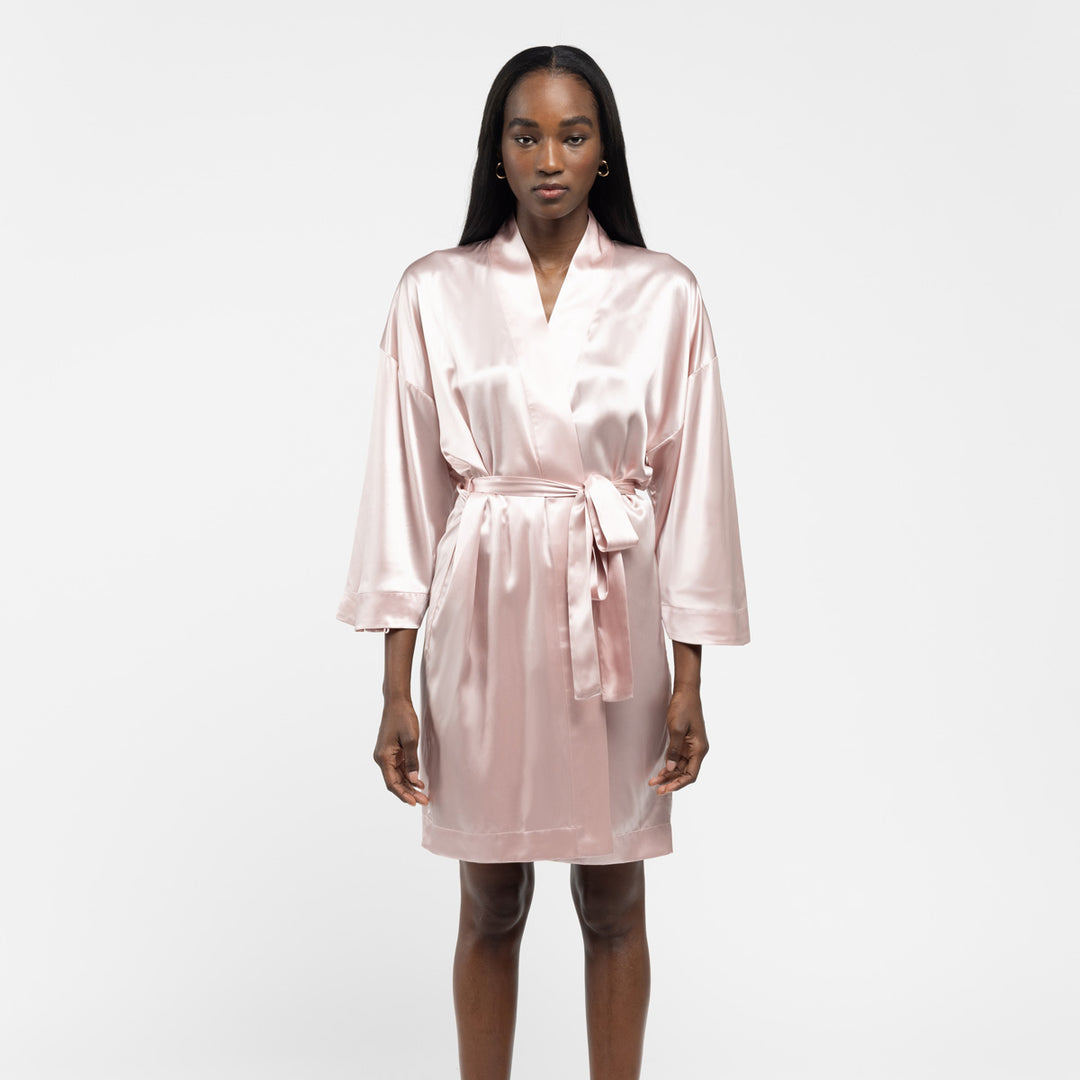The best fabrics for acne: All your questions answered
Acne and Fabrics
When it comes to pillowcases, the fabric you choose can have a significant impact on your skin. While all fabrics have some level of absorbency, some are better for those with acne-prone skin than others. Cotton is one of the most popular fabrics for pillows, but it can be quite rough on the skin, leading to further irritation and breakouts. Linen has similar absorbency properties, but isn’t as soft as cotton and can irritate sensitive skin. Satin is another common choice for a pillowcase fabric, but this material tends to produce more heat and oil buildup on the skin. That's why we use silk at Clementine Sleepwear. It is the best fabric for skin health. And we go a step further by ensuring it's organic silk (more on that later).
The Scientific Benefits of Silk for Acne
Silk is known to have numerous scientific benefits when it comes to acne-prone skin. First and foremost, silk has naturally occurring anti-microbial properties that help ward off bacteria buildup in your pillowcase over time. The main anti-microbial agent in silk is called sericin, which is a type of protein during the creation of silk. Sericin serves as a protective coating for the fibers of the silk fabric and helps ward off bacteria and fungi that can cause or worsen breakouts. In addition, sericin also helps protect the skin against UV rays and other environmental pollutants that can damage skin cells; this makes it an ideal fabric for those dealing with sensitive skin conditions such as acne.
Organic silk is known to contain certain compounds such as amino acids which are beneficial for skincare due to their ability to reduce inflammation and irritation associated with acne. Amino acids like glycine, alanine, tyrosine, and glutamic acid help keep skin hydrated while also reducing signs of inflammation like redness or scaling. Additionally, these compounds are found in higher concentrations within silk fabrics than in cotton fabrics which can further benefit those dealing with acne-prone skin by providing extra hydration and protection against environmental factors.
Overall, silk has many significant scientific advantages when it comes to acne-prone skin including its naturally occurring anti-microbial properties, its hypoallergenic capabilities, its higher moisture retention rate compared to cotton fabrics, its ability to provide additional protection against environmental factors such as UV radiation or pollution particles thanks to its high concentration of sericin proteins, and its additional benefits provided by amino acids which help reduce inflammation and irritation associated with acne.
Silk is also an ideal choice for those with acne-prone skin due to its softness and ability to maintain a cool temperature throughout the night; these two factors make it easier for those suffering from acne to get a good night's sleep without any disruption caused by discomfort or irritation associated with other types of fabrics like cotton or linen.
The Problem with Cotton Pillowcases and Acne
When it comes to pillowcases, cotton is not ideal for those suffering from acne. It tends to be quite rough on the skin, leading to irritation and breakouts. Also, cotton absorbs moisture which can further increase inflammation in already-sensitive skin; this can lead to acne flare-ups or other issues such as increased redness or scaling. Additionally, because cotton is highly absorbent, it also leads to oil buildup on the skin which can block pores and cause breakouts.
To make matters worse, many of us who may sleep on a cotton pillowcase report that we don't wash them frequently enough which can lead to bacteria accumulation in the pillowcase over time. And in case you didn't know, that's bad. This bacteria buildup can act as a catalyst for even more acne breakouts as it exacerbates inflammation and irritation already present in the skin. To avoid these issues altogether, choosing a fabric such as silk or satin for your pillowcase can help reduce skin irritation caused by sleeping on a rougher fabric like cotton while also helping keep bacteria at bay with its natural antimicrobial properties.
Overall, when dealing with acne-prone skin, the cotton vs silk debate is an easy one - it’s important to be aware of the fabrics you choose when selecting your bedding materials; opting for a material like silk over cotton is a better choice when the product is on your face. Silk is preferable over These rougher fabrics like cotton as it won't irritate your skin and helps maintain moisture levels while keeping bacteria out of your pillowcase.
Is satin good for your skin?
Satin is a popular choice for pillowcases due to its silky texture, but trust us when we say, silk, it is not. Satin is not ideal for those suffering from acne. It's actually made of polyester and nylon fibers, which are man-made materials that don’t breathe as well as natural fabrics like silk or cotton. As a result, satin can trap sweat and oil on the skin and cause skin irritation, leading to further inflammation and breakouts. So, when it comes to satin vs. silk, silk wins every time.
Many satin fabric products contain toxic chemicals such as formaldehyde that can cause further damage to your skin. Formaldehyde is often used in the manufacturing process of these fabrics because it helps hold the fibers together; however, this chemical can be irritating to the skin and even cause long-term damage if exposed over time. This is why it’s important to look for formaldehyde-free products when purchasing satin fabrics for bedding purposes.
Overall, satin pillowcases are not ideal for those with acne-prone skin because they don’t allow air to flow properly and can contain potentially harmful chemicals which increase your toxic load. Organic silk pillowcases offer an alternative solution as they provide all of the same luxurious feel without any of the potential harm associated with satin fabrics. Organic means no toxins. Silk means natural, anti-microbial benefits! Not only do silk pillowcases help keep your face cool throughout the night – reducing inflammation and irritation associated with acne – but they also come with naturally antibacterial properties that help ward off bacteria buildup in your pillowcase over time.
Silk vs. Cotton When It Comes to Acne
When it comes to pillowcases, the choice between silk and cotton can make a world of difference for those with acne-prone skin. Silk is by far the superior option when it comes to fabrics for acne-prone skin because it is softer than cotton or linen, which can cause further irritation and breakouts. Silk also has several other benefits such as its hypoallergenic properties and natural antimicrobial properties which help ward off bacteria and fungi from accumulating in your pillowcase over time. Additionally, silk's special property called “silk floss” helps keep moisture from being absorbed into your pillow case while also wicking moisture away from your face; this helps reduce oil buildup that leads to breakouts in some cases.
Compared to cotton, silk is more breathable and maintains a cool temperature throughout the night so those suffering from acne can get a good night's sleep without any disruption caused by discomfort or irritation associated with the rougher fabric of cotton. Since silk is naturally antibacterial, bacteria buildup in your pillowcase over time is less likely as well. In addition, since silk fibers are much smaller than cotton fibers they can move more freely; this means that they will last longer than cotton fibers before becoming worn out. Finally, due to its softness and temperature regulation capabilities, silk can provide better skin health overall as it helps keep inflammation and irritation at bay throughout the night.
Overall, while both fabrics have their pros and cons depending on what you need them for; when it comes to acne-prone skin silk is a much better option than cotton due to its softness, breathability, longer lifespan, and contribution towards better skin health. And organic silk is the next level up with lessened toxic load and increased skin health benefits.
The perfect antibacterial pillowcase
Silk is by far the best option when it comes to fabrics for acne-prone skin. Not only is it softer than cotton, linen, satin, and other alternatives, it also helps to keep your face cool throughout the night which helps reduce inflammation and irritation associated with acne flares ups. Silk has several other benefits such as its hypoallergenic properties and natural antimicrobial properties that help ward off bacteria and fungi from accumulating in your pillowcase over time. Additionally, silk has a special property called “silk floss” which helps keep moisture from being absorbed into your pillow case while also wicking moisture away from your face; this helps reduce oil buildup that leads to breakouts in some cases.
Clementine Sleepwear Organic Silk Hits Different
For those who are looking for the best fabric for acne-prone skin, organic silk is an ideal option that hits differently compared to other skin irritant fabrics, and even conventional silk. Unlike traditional synthetic silks, organic silk is not treated with toxic chemicals such as formaldehyde and thus does not cause further damage to your skin. In addition, this type of silk fabric is higher quality and provides better skin health benefits due to its natural antibacterial properties and its hypoallergenic capabilities.
So whether a silk sleep mask, or silk pajama set, or a silk scrunchie, organic silk is the best. Organic silk has a naturally occurring antimicrobial agent called sericin which helps ward off bacteria buildup in your pillowcase over time. This makes it an even more ideal choice for those with sensitive skin conditions such as acne as it helps reduce inflammation associated with breakouts. Additionally, organic silk also contains amino acids like glycine, alanine, tyrosine, and glutamic acid which help keep skin hydrated while reducing signs of inflammation like redness or scaling.
Compared to traditional synthetic silks – or even cotton fabrics – organic silk is much more breathable and maintains a cool temperature throughout the night. This helps ward off any inflammation or irritation associated with acne while also keeping your face cool so you can rest easy and wake up refreshed. Finally, since organic silk fibers are much smaller than traditional synthetic fibers they last longer before becoming worn out; this means you can enjoy luxury without having to replace your pillowcases as often!
Overall, Clementine Sleepwear's organic silk offers superior comfort and protection against acne-causing factors than other fabrics on the market today. Not only does it have naturally occurring anti-microbial agents that ward off bacteria buildup in your pillowcase over time but it also keeps your face cool throughout the night thanks to its breathability; both of which are ideal for those dealing with acne-prone skin. Additionally, organic silk also contains beneficial amino acids that help reduce inflammation associated with breakouts while its high quality ensures a longer lifespan before replacement is necessary.
